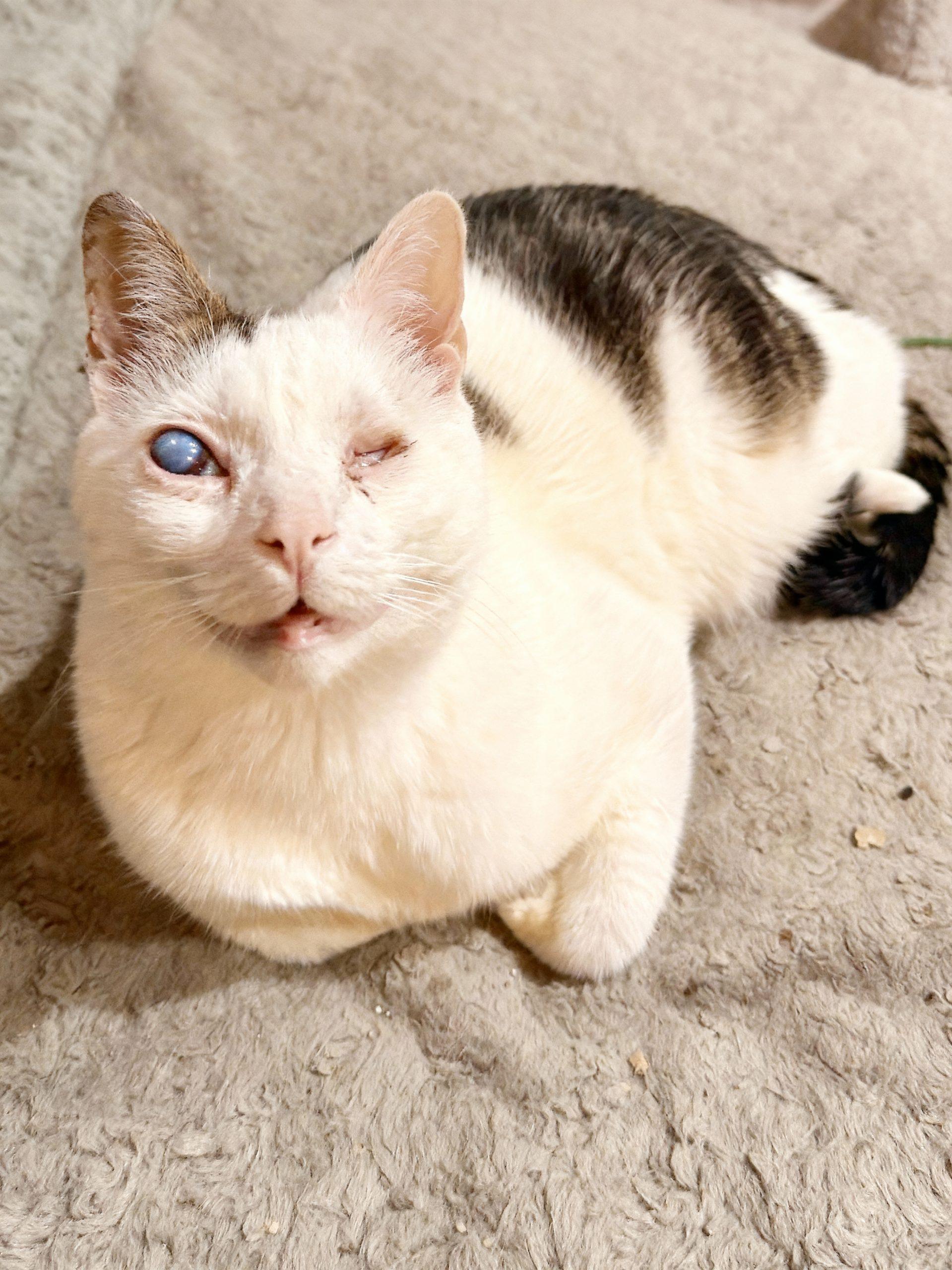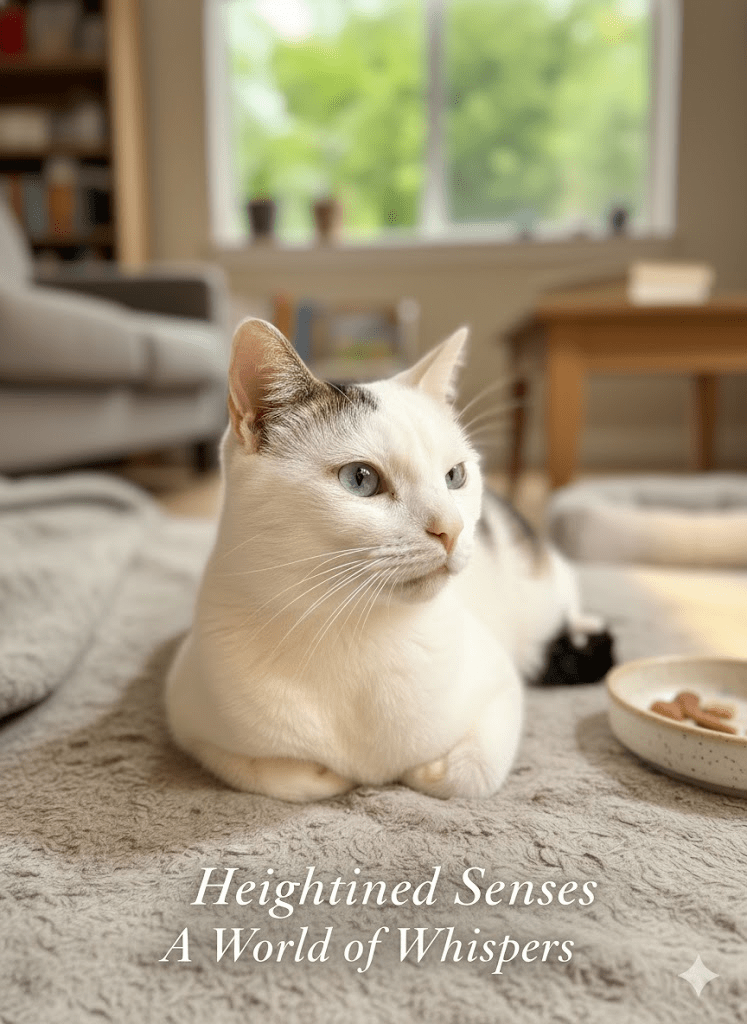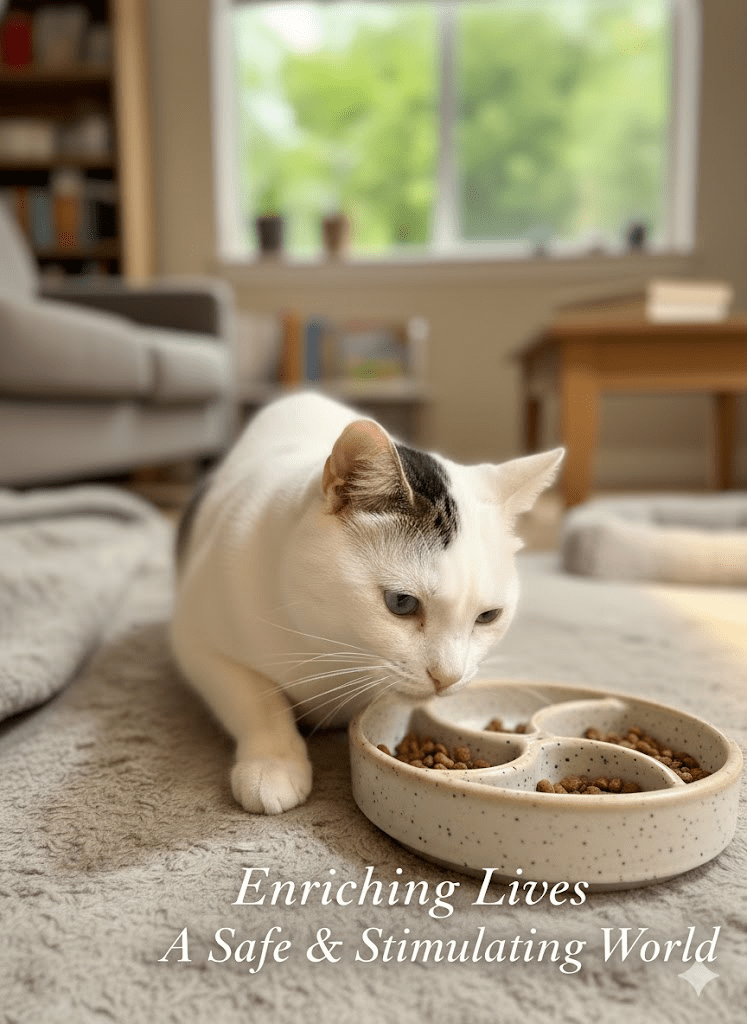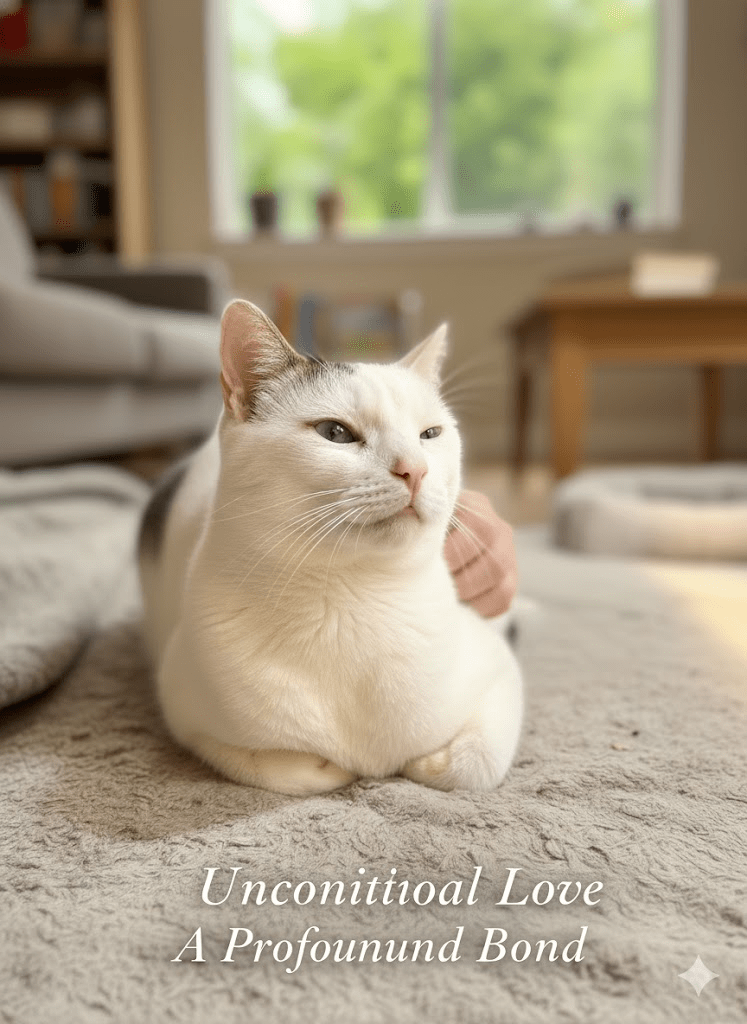In a world that often prioritizes perfection, there are creatures whose very existence challenges our perceptions of what it means to be whole. This captivating image introduces us to one such individual—a cat whose unique appearance tells a story of resilience, adaptation, and unwavering spirit. With one eye a cloudy blue, suggesting blindness or severe impairment, and the other gently closed, perhaps due to injury, congenital condition, or simply a relaxed blink, this feline embodies a profound strength. Its pristine white fur, complemented by patches of dark tabby markings on its back, speaks to a history and a life lived, full of character and untold adventures. The soft, textured blanket beneath it cradles its form, hinting at a comfortable and secure environment where it is cherished. The cat’s slightly open mouth and subtle expression convey a sense of calm contentment, reminding us that true well-being transcends physical limitations. This animal is more than just a pet; it is a testament to the fact that even with challenges, life can be lived with grace, joy, and an abundance of love. Its presence invites us to look beyond superficial differences and appreciate the intrinsic value and unique beauty in every living being.

Challenges, whether from birth or acquired through life’s unexpected turns, can profoundly shape an animal’s journey. For cats like the one pictured, visual impairment or the absence of an eye doesn’t diminish their capacity for a full and meaningful life. Instead, it often hones their other senses to extraordinary levels. Their whiskers, highly sensitive tactile instruments, become crucial for navigating their environment, sensing changes in air currents, and detecting obstacles. Their hearing, already acute, sharpens further, allowing them to pinpoint the source of sounds with remarkable precision, from a dropped treat to the soft footsteps of their human companions. Their sense of smell, a cat’s primary tool for understanding their world, also plays an even more vital role, guiding them to food, identifying familiar people and places, and marking their territory. This incredible sensory compensation is a natural marvel, allowing them to adapt with an almost unbelievable grace and continue to explore, play, and interact with their surroundings.

Living with a special needs cat, especially one with visual impairment, presents a unique set of considerations for caregivers. The primary goal is to create a safe, predictable, and enriching environment that minimizes stress and maximizes their quality of life. Maintaining a consistent layout of furniture and belongings is paramount; sudden changes can disorient them and erode their confidence. Ramps or steps can help them access favorite perches safely. Providing scented markers or textured mats can also aid in navigation, giving them cues about different areas of the home. Interactive toys that engage their hearing and smell, such as crinkly balls, puzzle feeders, or toys infused with catnip, can provide essential mental stimulation. Above all, consistent routines, gentle vocal cues, and a loving, patient approach help these cats thrive, building a bond of trust that is truly profound.

Despite their challenges, special needs cats often possess an extraordinary capacity for joy and affection. They form deep bonds with their human companions, relying on them for guidance, comfort, and love. The cat in the image, with its serene expression, seems to radiate this inner peace. It reminds us that empathy and compassion are not just virtues but essential components of a truly fulfilling human-animal relationship. When we open our hearts to animals with disabilities, we often find that they teach us more about resilience, unconditional love, and the true meaning of happiness than we could ever teach them. Their ability to find contentment amidst adversity is a powerful lesson for us all, encouraging us to embrace our own imperfections and find joy in every moment.







